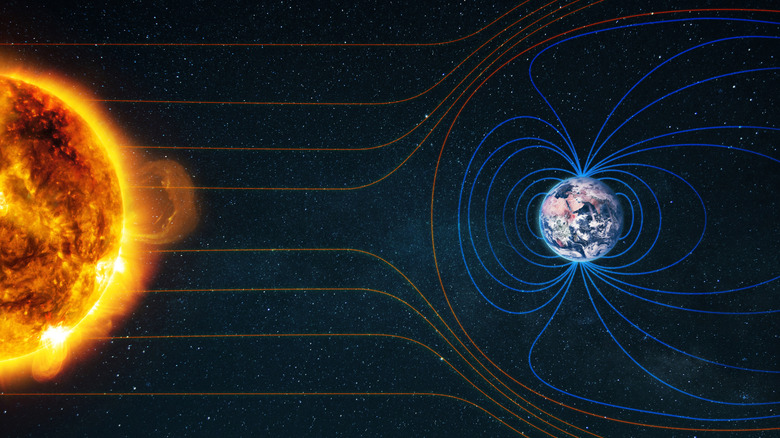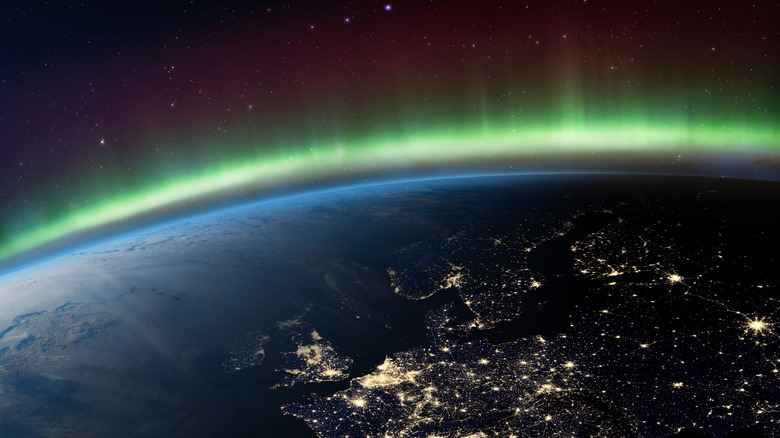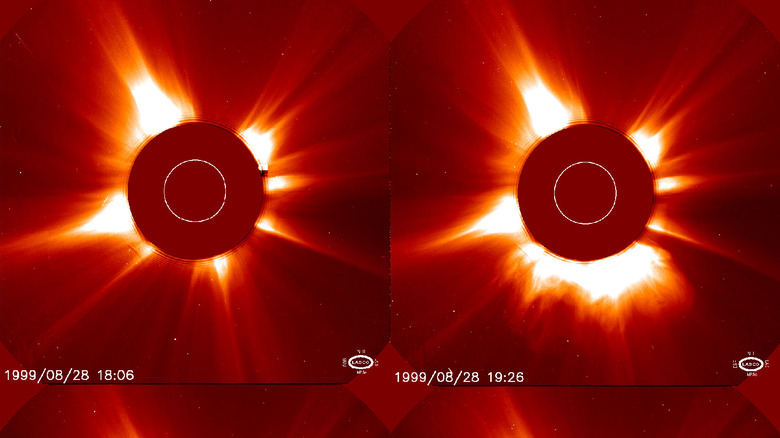The Truth About How Dangerous Geomagnetic Storms Really Are
In late March 2025, residents of states as far south as South Dakota, Wisconsin, and Minnesota were treated to an unusual sight: the northern lights glowing in the night sky. The aurora borealis, typically confined to high-latitude regions, made this rare appearance thanks to a natural phenomenon known as a geomagnetic storm — a period of heightened solar activity that can result in spectacular auroral displays in the night sky.
While many celebrate these stunning displays — check out our breakdown of every color of the northern and southern lights here — geomagnetic storms have the potential to disrupt human civilization like few other naturally occurring phenomena. The storms occur when solar wind — streams of charged particles ejected from the sun — collide with Earth's magnetic field. These can vary in intensity from mild to extreme, depending on the strength and speed of the incoming solar particles. The most intense geomagnetic storms often come from a coronal mass ejection (CME), a particularly violent eruption of solar plasma from the sun's corona that barrels through space at incredible speeds.
Although most storms go unnoticed by the general public, the most powerful ones can have a serious impact on our way of life, from satellite malfunctions to widespread power outages, and even heating up the Earth's atmosphere. It's a bit like what would happen if the sun suddenly exploded, just on a massively reduced scale. That's what makes these beautiful auroras a kind of double-edged sword; they're visually enchanting but potentially tumultuous. With the sun currently at the peak of its 11-year solar cycle, a period called the solar maximum, the chances of geomagnetic activity are particularly high. Let's take a look at what's at stake and just how prepared humanity is for a serious solar event.
Geomagnetic storms: What can go wrong
The same solar energy that powers breathtaking auroras also poses a serious threat to the infrastructure of modern civilization. That's a result of two things: the sun's electromagnetic nature and the fact that we've built our societies around technology powered largely by electricity. When a strong geomagnetic storm strikes Earth, it can induce electrical currents in power grids and pipelines, mess with satellite and radio navigation systems, and even confuse migratory animals flying at high levels.
Perhaps the most infamous example of this occurred in March 1989, when a powerful solar storm knocked out the entire power grid in Quebec, Canada, leaving over 6 million people without electricity for nine hours. All across North America and parts of Europe, power grids surged and fried crucial infrastructure. In one instance, a transformer at a New Jersey nuclear power plant was overloaded and destroyed.
A similar event today could wreak even greater havoc. Since the 1980s, human civilization has only grown more reliant on an increasingly extensive electrical grid to power our modern way of life. Satellites and spacecraft are particularly exposed. During intense storms, the increased amount of charged particles bombarding our planet actually adds energy to our upper atmosphere. That energy is expressed in the form of heat, which can raise the density of the atmosphere so much that it causes drag on satellites — potentially enough to make them lose altitude.
The National Oceanic and Atmospheric Association (NOAA) rates these events on a five-point "G" scale: G1 being the lowest and G5 being the most severe. A magnitude G3 geomagnetic storm is considered "strong," and is enough to trigger issues in navigation systems and spawn auroras as low as Oregon and Illinois. G5 storms can take out satellites for days and cause complete, widespread blackouts.
Are we ready for the next big geomagnetic storm?
The potential consequences of extreme geomagnetic storms remain a pressing reality, and governments and scientific agencies have ramped up efforts in recent years to monitor space weather and prepare infrastructure for solar disturbances. One dramatic example of this is NASA's Parker Solar Probe, which has been making close passes by the sun since 2018 to better study the solar wind and the particles that compose it.
NASA also has a host of spacecraft in Earth's orbit whose purpose is to monitor solar activity and its effects on planetary bodies, including ours. The joint European Space Agency and NASA Solar and Heliospheric Observatory, for example, watches the sun's most active regions while tracking sunspots (places on the sun's surface where magnetic field lines converge). NASA also operates the Solar Dynamics Observatory, the goal of which is to understand how the sun influences Earth and eventually to be able to predict solar variations that could potentially impact infrastructure on our planet. NOAA's Space Weather Prediction Center is another venture that aims to detect things like CMEs early and provide warnings to the public.
CME events are often preceded by what's called an interplanetary shock, something that can give researchers anywhere between 15 and 60 minutes of warning before the magnetic blast arrives on Earth. That's invaluable time to prepare systems for the oncoming storm. But no matter how prepared we are, geomagnetic storms are another reminder of the power of cosmic bodies and the ability of our planet to protect us from the worst of what's going on out there in space. After all, the sun could enter an even more dangerous phase than the solar maximum — we just need to be ready for it.


